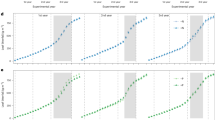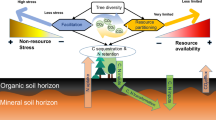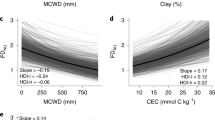Abstract
Although large scale analyses of foliar N:P ratios suggest and overall pattern of P limitation in tropical forests, analyses within the biome are less indicative of a consistent pattern of nutrient limitation. High tree species diversity and soil heterogeneity are important factors driving the variability of foliar chemistry in the tropics; however, this variability could be reduced at the level of the functional characteristics of the species present at a site. In this study it is hypothesized that foliar N:P ratios would be more constrained when the species are grouped according to functional characteristics, and would reveal patterns of nutrient limitation. The study was conducted in a tropical forest landscape of the Porce region in Colombia, which consists of patches of primary and secondary forests of different ages. The functional groupings revealed consistent patterns of conservative N cycling in species present at young secondary sites, as well as conservative P cycling of the species present later in succession and in primary forests. Although the observed data have limitations in terms of capturing the overall variability for each functional group, the classification used here provided support for the proposed hypotheses. It is concluded that functional composition, rather than taxonomic composition, can potentially improve our understanding of nutrient cycling in tropical forests.
Similar content being viewed by others
Article PDF
Author information
Authors and Affiliations
Corresponding author
Rights and permissions
About this article
Cite this article
Sierra, C. Plant functional constraints on foliar N:P ratios in a tropical forest landscape. Nat Prec (2009). https://doi.org/10.1038/npre.2009.3185.1
Received:
Accepted:
Published:
DOI: https://doi.org/10.1038/npre.2009.3185.1
Keywords
This article is cited by
-
Observational Insights on the Effects of Land Use and Precipitation Seasonality on Water-driven Circulation of Phosphorus in the Tropical Andes
Water, Air, & Soil Pollution (2021)



